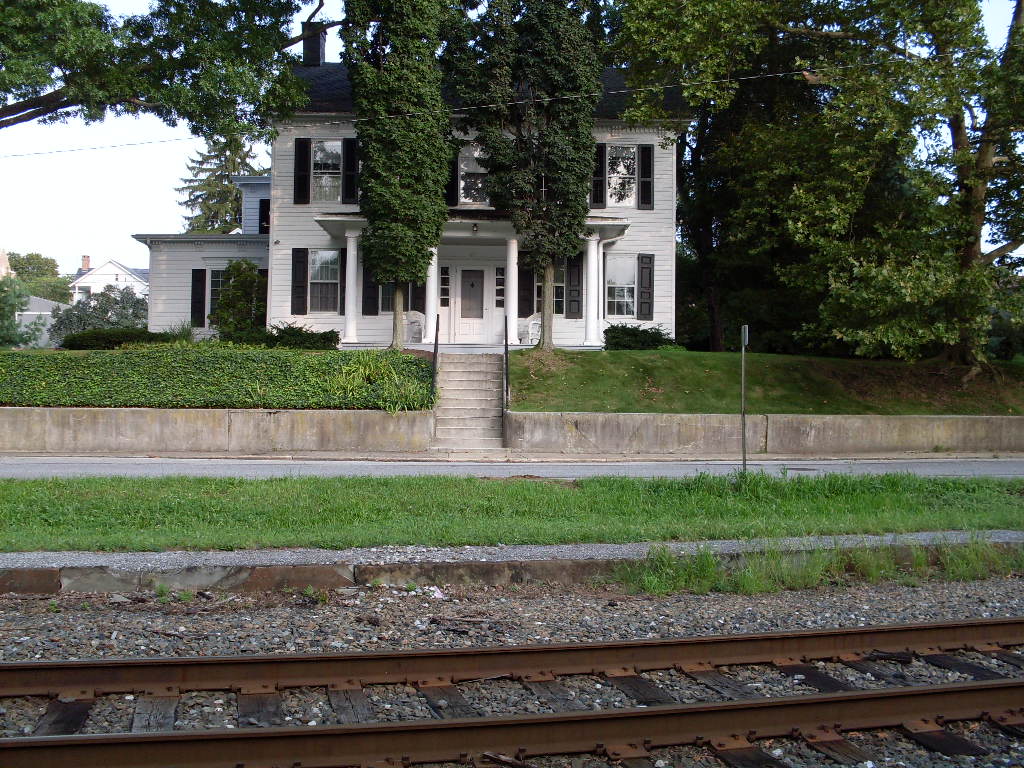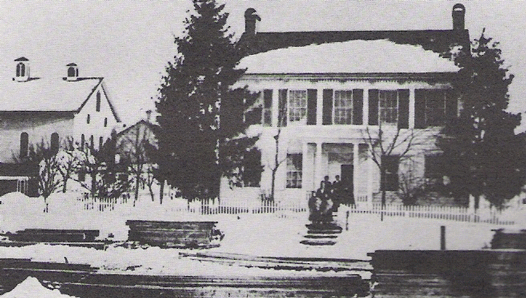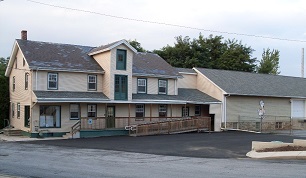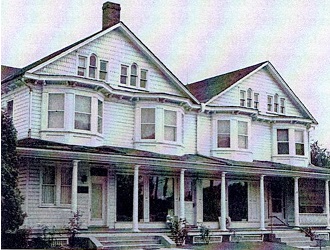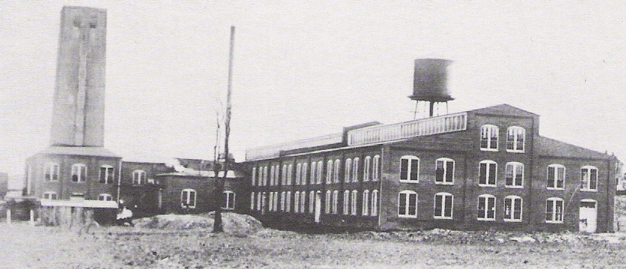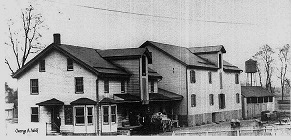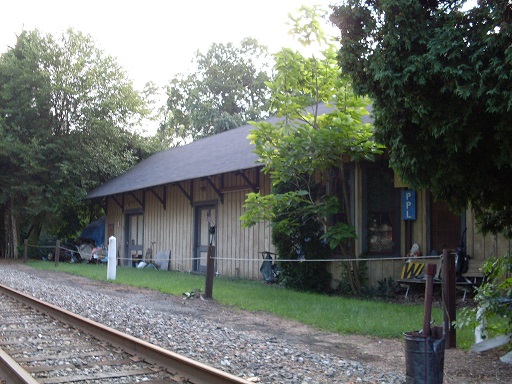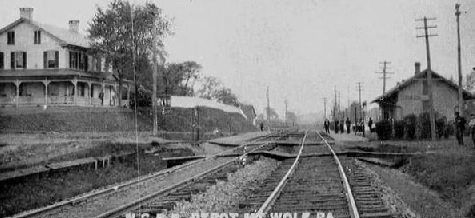

North Eastern York County History In Preservation NeyChip
"To provide rail service for New Holland (Saginaw), Liverpool (Manchester) and Starview, officials of the York and Cumberland Railroad plotted a station roughly midway between Emigsville and the river. Seemingly in the middle of nowhere, the station was named Mount Campbell in honor of Thomas Campbell, a York lawyer who had been instrumental in urging rail completion to Harrisburg." See map with 1850 overlay.
"The first businessman to realize the possibilities of locating near the new railroad was Adam Wolf of New Holland. He purchased a parcel of ground from Henry Hoff and constructed a store and warehouse....(Adam did not move to his purchased parcel.) Of the three Wolf sons, George H. Wolf soon came to be the one to devote his energies to the young business and new village.... Appointed stationmaster for the railroad."
"During those early years the town suffered through some confusion of names. The railway station had first been called Mount Campbell but when the post office was established, in July 1852, it carried the name Mount Wolf.... About the time the railroad changed the station's name to Mount Wolf, the United States postal authorities assigned the name Mount Campbell to their office April 1853....When George H. Wolf was re-appointed postmaster, in July 1861, the name changed again,finally, to Mount Wolf....per the Post Office Department The speculation that the town was named for Pennsylvania Governor George Wolf is far fetched. The Governor served in the 1830's and had no relationship whatever with the Adam Wolf family."
"On the peaceful Sunday morning of June 28, 1863, the quiet village of Mount Wolf experienced it's first and only encounter with an armed foe... Major General Jubal Early of the Confederate Army arrived in the city of York......A battalion was dispatched to the north of York, which halted for time in Manchester and then moved into Mount Wolf. While in Mount Wolf the Confederates entered George H. Wolf store...The Confederates took the goods from Wolf, paid for them in Confederate currency and continued toward the road bridges spanning the Conewago." See Union map / Confederate map. According to PA Civil War Civilian Damage Claims, George H Wolf did not claim a specific amount of lost. However, those that did never received compensation from the State. Here is a second account of this event.
"On Sunday afternoon, June 28, Colonel French was on his own, deep in enemy territory and facing a much larger number of state militia who were reportedly guarding the bridges between Mount Wolf and York Haven. He was outnumbered two to one, and the militia certainly would have rifle-muskets, much longer in range than his 200+ men's carbines and shotguns. It turned that French had nothing to fear from the long-range weapons of the emergency militiamen. In the service for less than a week, they fired a few desultory shots as French's Rebels approached and then fled across the Susquehanna River on flatboats to Bainbridge. The Confederates then poured coal oil on a pair of bridges (bridges numbers 115 and 116 in the NCRY's parlance) over the Conewago Creek near its confluence with the river. They applied the torch and soon the two bridges were ablaze. Two weeks later, the army repaired the bridges and traffic rolled again between Baltimore and Harrisburg. The NCRY was back in business, despite the efforts of the Rebel raiders." See Scott Mingues: RR workers in 1907 found parts of bridges Jubal Early's cavalry burned.
Henry B. Bonge, who had a house at the now corner of Main and Walnut, was the post master of Mount Campbell 1855-1857. His oldest son, George F. Bonge, enlisted in the US Army to fight with General Taylor in Mexico. After that conflict, George stayed in a southern state. When the Civil War broke out, George joined the Confederate Army in Virginia. He had two brothers Fredrick M. and Daniel who joined the 87th Regiment Pennsylvania Infantry. It is said that George met his brother Fredrick at war's end at Appomattox. Documents do show Fredrick's regiment being there and that Fredrick was discharged later in October 1964. However, there is no official record of a George Bonge in the Confederate Army but there is a Fredrick Bonge from Virginia, which was his middle name. According to the history of another brother William Bonge, George met his Maker by a discharge of a cannon. In either case, George never return to his family nor the area, nor is he listed in his family tree. Read more about this family story here.
"By 1885, Mount Wolf had grown into a town of nearly fifty dwelling houses and had a population of about 200 people (see map)". In the 1890's, a number of businesses started including Diehl's Furniture and Undertaking. Of course the area's natural resources, live stock, crops and lumber continued to bring income. "Two months before the turn of the century, the Mount Wolf Furniture Company was incorporated with a capital investment of $18,000... Also that same month, the Mount Wolf Shirt Company was founded. Then in 1904, the Pennsylvania Wire Cloth Company was incorporated.The business boom at the turn of the century had brought growth and prosperity to Mount Wolf at a rate unmatched by any of the older and larger towns between York and the Susquehanna River."
"The first businessman to realize the possibilities of locating near the new railroad was Adam Wolf of New Holland. He purchased a parcel of ground from Henry Hoff and constructed a store and warehouse....(Adam did not move to his purchased parcel.) Of the three Wolf sons, George H. Wolf soon came to be the one to devote his energies to the young business and new village.... Appointed stationmaster for the railroad."
"During those early years the town suffered through some confusion of names. The railway station had first been called Mount Campbell but when the post office was established, in July 1852, it carried the name Mount Wolf.... About the time the railroad changed the station's name to Mount Wolf, the United States postal authorities assigned the name Mount Campbell to their office April 1853....When George H. Wolf was re-appointed postmaster, in July 1861, the name changed again,finally, to Mount Wolf....per the Post Office Department The speculation that the town was named for Pennsylvania Governor George Wolf is far fetched. The Governor served in the 1830's and had no relationship whatever with the Adam Wolf family."
"On the peaceful Sunday morning of June 28, 1863, the quiet village of Mount Wolf experienced it's first and only encounter with an armed foe... Major General Jubal Early of the Confederate Army arrived in the city of York......A battalion was dispatched to the north of York, which halted for time in Manchester and then moved into Mount Wolf. While in Mount Wolf the Confederates entered George H. Wolf store...The Confederates took the goods from Wolf, paid for them in Confederate currency and continued toward the road bridges spanning the Conewago." See Union map / Confederate map. According to PA Civil War Civilian Damage Claims, George H Wolf did not claim a specific amount of lost. However, those that did never received compensation from the State. Here is a second account of this event.
"On Sunday afternoon, June 28, Colonel French was on his own, deep in enemy territory and facing a much larger number of state militia who were reportedly guarding the bridges between Mount Wolf and York Haven. He was outnumbered two to one, and the militia certainly would have rifle-muskets, much longer in range than his 200+ men's carbines and shotguns. It turned that French had nothing to fear from the long-range weapons of the emergency militiamen. In the service for less than a week, they fired a few desultory shots as French's Rebels approached and then fled across the Susquehanna River on flatboats to Bainbridge. The Confederates then poured coal oil on a pair of bridges (bridges numbers 115 and 116 in the NCRY's parlance) over the Conewago Creek near its confluence with the river. They applied the torch and soon the two bridges were ablaze. Two weeks later, the army repaired the bridges and traffic rolled again between Baltimore and Harrisburg. The NCRY was back in business, despite the efforts of the Rebel raiders." See Scott Mingues: RR workers in 1907 found parts of bridges Jubal Early's cavalry burned.
Henry B. Bonge, who had a house at the now corner of Main and Walnut, was the post master of Mount Campbell 1855-1857. His oldest son, George F. Bonge, enlisted in the US Army to fight with General Taylor in Mexico. After that conflict, George stayed in a southern state. When the Civil War broke out, George joined the Confederate Army in Virginia. He had two brothers Fredrick M. and Daniel who joined the 87th Regiment Pennsylvania Infantry. It is said that George met his brother Fredrick at war's end at Appomattox. Documents do show Fredrick's regiment being there and that Fredrick was discharged later in October 1964. However, there is no official record of a George Bonge in the Confederate Army but there is a Fredrick Bonge from Virginia, which was his middle name. According to the history of another brother William Bonge, George met his Maker by a discharge of a cannon. In either case, George never return to his family nor the area, nor is he listed in his family tree. Read more about this family story here.
"By 1885, Mount Wolf had grown into a town of nearly fifty dwelling houses and had a population of about 200 people (see map)". In the 1890's, a number of businesses started including Diehl's Furniture and Undertaking. Of course the area's natural resources, live stock, crops and lumber continued to bring income. "Two months before the turn of the century, the Mount Wolf Furniture Company was incorporated with a capital investment of $18,000... Also that same month, the Mount Wolf Shirt Company was founded. Then in 1904, the Pennsylvania Wire Cloth Company was incorporated.The business boom at the turn of the century had brought growth and prosperity to Mount Wolf at a rate unmatched by any of the older and larger towns between York and the Susquehanna River."
Mount Wolf Borough 1850-1910
Mt Wolf Train Station/2011
1856 Wolf's Home/2022 Governor's Home
Wolf's Lumber & Supply / 2010 Day Care
Main Street
Deih's Furniture Funeral Home since 1879
Wire Coth Factory 1904 until 2010
Mount Wolf Furniture Company / Bern Haven / Door & Window Company / Investment Toys For Big Boys
Roll over pic
to see more.
to see more.
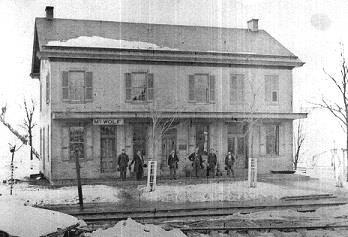
Wolf's house store & warehouse 1852
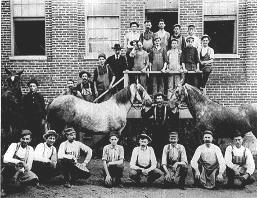
George Wolf and Sons Mill early 1900's

Wolf's work force early 1900's


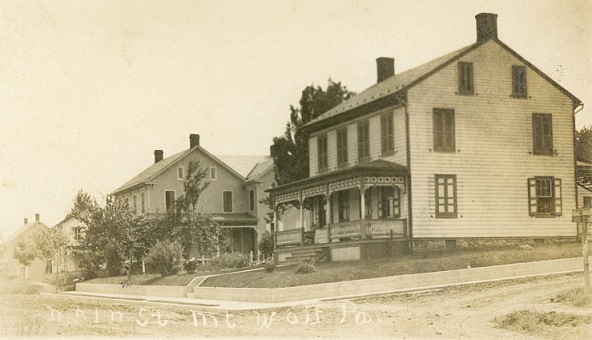
NeyChip would love
to hear from you.
NeyChip@gmail.com
to hear from you.
NeyChip@gmail.com
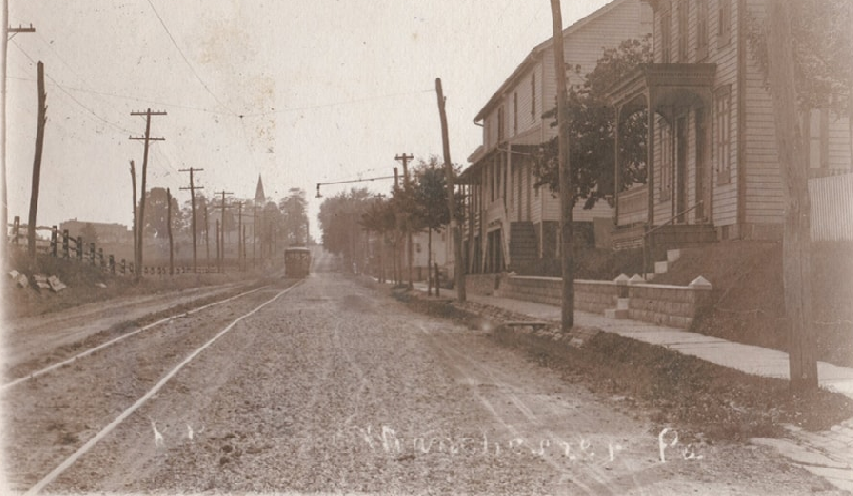

Maple Street towards Manchester
Mt Wolf Train Station
Maple at South Second Street
Maple St at the creek
